- There’s still so much we don’t know about life on planet Earth that scientists discover new species with whom we share this planet nearly every day.
- For instance, this year scientists described a new species of orangutan in Sumatra — just the eighth great ape species known to exist on planet Earth. And that’s just one of many notable, bizarre, or downright fascinating discoveries made this year.
- Here, in no particular order, we present the top 20 new species discovered in 2017.
There’s still so much we don’t know about life on planet Earth that scientists discover new species with whom we share this planet nearly every day.
For instance, this year scientists described a new species of orangutan in Sumatra — just the eighth great ape species known to exist on planet Earth.
Sometimes we discover new species that have been hiding right under our noses — like the six new species of silky anteater that were mistakenly lumped in with the one known, widespread species in Central and South America.
Then there are new species that surprise even the scientists who discovered them — such as the new butterflyfish recently discovered in the Philippine’s Verde Island Passage, even though butterflyfish are a relatively well-studied group.
Some new species are named after famous people or characters in an attempt to draw more attention and awareness to the natural world — including new spiders named for David Bowie, Barack and Michelle Obama, and Bernie Sanders, as well as a new bat sometimes referred to as “the Yoda bat” because of its resemblance to the diminutive Jedi Master from the Star Wars films.
A lot of newly discovered species can certainly use the attention, given that they are already facing severe threats from human activities, even though we just learned of their existence — as is the case with the a new catfish found in South America and the newly discovered orangutan species.
Here, in no particular order, we present the top 20 new species discovered in 2017.
1. The Eighth Great Ape: New orangutan species discovered in Sumatra
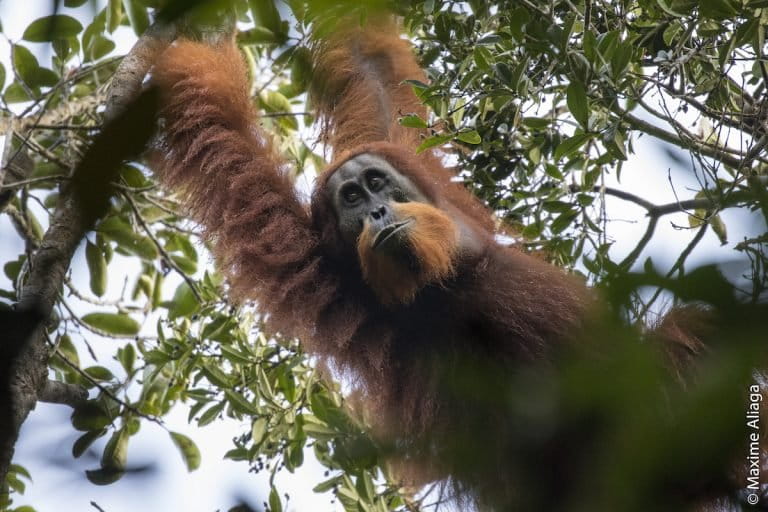
On November 1, 2017, there were seven recognized great ape species in the world. On November 2, there were eight, thanks to the release of a study describing a new species of orangutan in Sumatra, Indonesia. The species was once assumed to be an isolated population of the Sumatran orangutan, but is in fact a distinct species. The Batang Toru orangutan, as it is called (it’s also sometimes referred to as the Tapanuli orangutan), was found to differ from the Sumatran orangutan in morphology, behavior and genetics. There are fewer than 800 Batang Toru orangutans in existence, making it the rarest of all the great apes — and it is highly threatened by habitat loss.
2. Meet the new Bernie Sanders spider

Together with four of his undergraduate students, Ingi Agnarsson, a spider expert and professor of biology at the University of Vermont in the United States, described 15 new species belonging to the genus Spintharus, known as “smiley-faced” spiders because of the patterning on their abdomens that resemble a smiley face. Each of Agnarsson’s graduate students, who did the photography and lab work to document the new species, were given the chance to name a few of the spiders, and named them after famous people like David Bowie and Barack and Michelle Obama. But they all named the Bernie Sanders spider together, according to Lily Sargeant, one of the students: “We all have tremendous respect for Bernie. He presents a feeling of hope.”
3. Scientists determine there are seven species of silky anteater, not one

Silky anteaters are small, nocturnal animals that live in the canopies of trees in the tropical forests of South and Central America. They are known as very discreet and thus difficult to find, which helps explain why Cyclopes didactylus, the common silky anteater, was one of the least studied anteaters in the world and had been considered to be a single species up until now. Researchers at the Universidade Federal de Minas Gerais in Brazil collected 33 samples of DNA from wild anteaters and examined more than 280 museum specimens from around the world in order to determine that silky anteaters are actually far more genetically and morphologically diverse than was previously understood. The researchers described six new, distinct species, but say there might be even more.
4. ‘Yoda bat’ happy to be recognized as new species

A new fruit bat species found in the rainforests of Papua New Guinea resembles Yoda closely enough that it had actually been referred to simply as the “Yoda bat.” According to Nancy Irwin, an Honorary Research Fellow in the Department of Biology at the University of York in the UK and author of the study describing the species, she chose the name Hamamas tube-nosed fruit bat because “Most of the morphological characteristics that separate this bat from other species are associated with a broader, rounder jaw which gives the appearance of a constant smile.” “Hamamas” is a local word for happy.
5. DNA analysis reveals a third species of flying squirrel in North America

There are now three known species of flying squirrel in North America. Glaucomys oregonensis, or Humboldt’s flying squirrel, can be found all along the Pacific Coast, from southern British Columbia down to the mountains of southern California. It is what’s known as a “cryptic species,” because coastal populations of the squirrel had previously been classified as northern flying squirrels (G. sabrinus) due to their similar appearance. A genetic analysis revealed the coastal populations belong to a distinct species all their own.
6. New cave catfish threatened by deforestation, mining, pollution

Scientists discovered the first entirely cave-dwelling armored catfish of the Callichthyidae family in South America. The species has adaptations for living underground, including a lack of pigment and reduced eyes. Researchers think it may use tree roots for shelter and food. But surveys indicate the new species, Aspidoras mephisto, is restricted to two caves in an area devoid of official protection, and human pressures around its restricted habitat mean it may already be highly threatened with extinction.
7. Scientists surprised to discover new butterflyfish

Because they are relatively well-studied, scientists generally don’t expect to come across new butterflyfish species. But that’s exactly what happened on an expedition by scientists with the San Francisco-based California Academy of Sciences when they were collecting live specimens 360 feet beneath the ocean’s surface in the Philippine’s Verde Island Passage. Roa rumsfeldi was found on a mesophotic reef, which is a coral reef system that lies in a narrow band of the ocean known as the “twilight zone” — deep enough for sunlight to be scarce, but not pitch black like the deep sea.
8. Giant tree-dwelling rat discovered in the Solomon Islands

For years, people living on Vangunu Island in the Solomons have spoken of the “vika,” a giant rat that lives in trees and cracks open coconuts with its teeth. But the rat remained elusive to the scientific community until researchers were finally able to find an individual of the mysterious rat in 2015. They formally described the species to science this year, making it the first new rodent species to be described from the Solomon Islands in 80 years.
9. Meet the new giant sunfish that has evaded scientists for centuries

The massive ocean sunfish is an odd-looking fish with a flat, rigid, tailless body. It’s not only the world’s largest bony fish, but also one of the most elusive. For the first time in 130 years, however, scientists have identified and described a new species of this giant fish that they say has been “hiding in plain sight for centuries.” The researchers who found the fish in waters around Australia, New Zealand, South Africa, Tasmania, and Chile named the new species the Hoodwinker sunfish or Mola tecta (derived from the Latin word tectus meaning disguised or hidden).
10. New species of dwarf lemur discovered in Madagascar
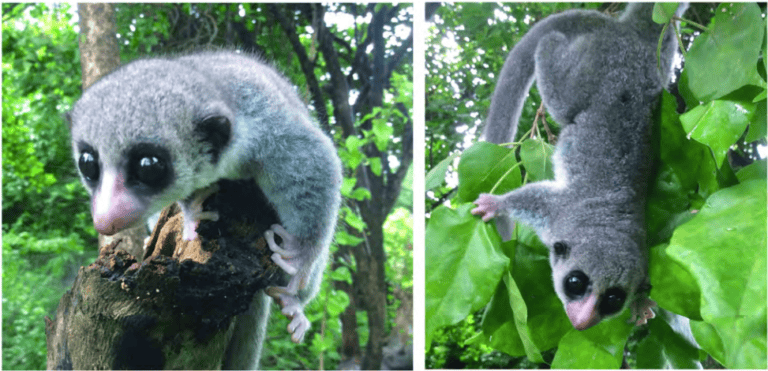
Scientists first identified the newly discovered Ankarana or Sheth’s dwarf lemur in 2014, but didn’t confirm it as a distinct species until a couple years later, after analyzing its DNA. The species was formally described in a study published earlier this year. The new dwarf lemur is tiny, weighing just over 100 grams. Its body is only about 16 to 17 centimeters long, with an additional 16-centimeters-long tail, making it one of the smallest lemurs in the genus Cheirogaleus.
11. Newly discovered beetle catches a ride on the backs of army ants to get around
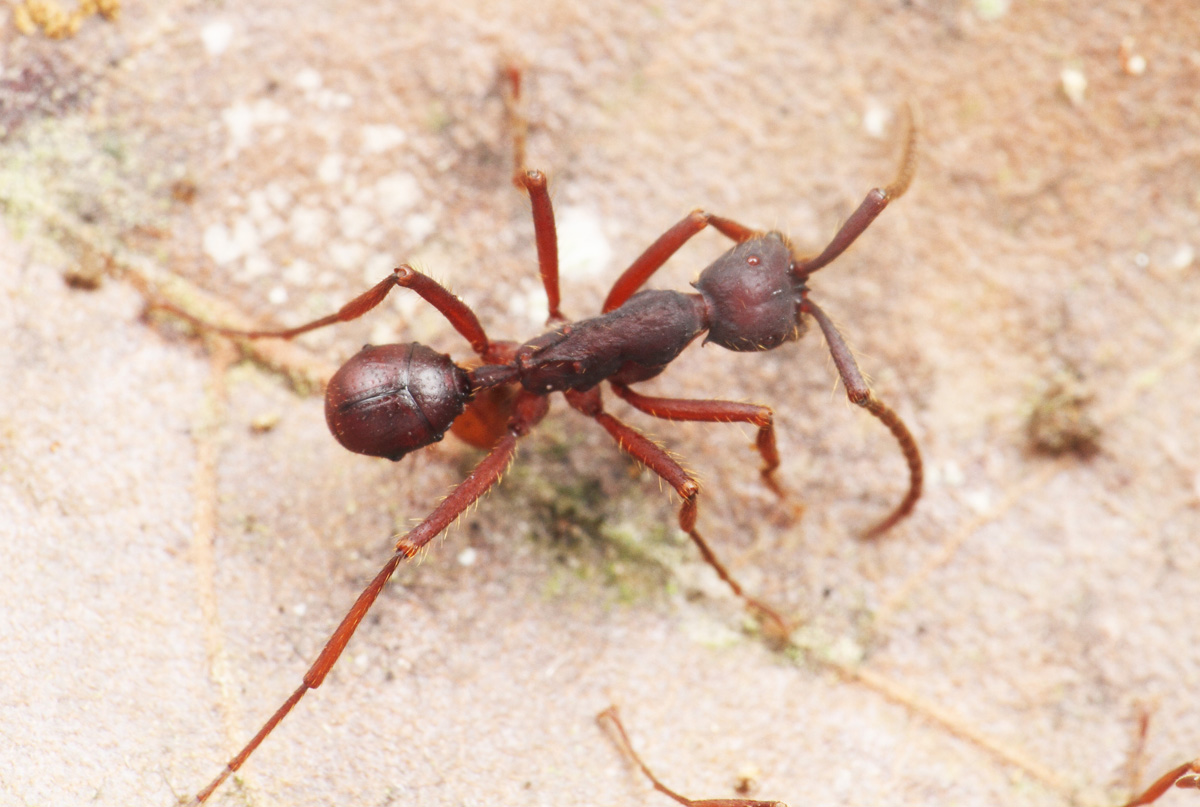
A new beetle found in a lowland Atlantic rainforest in Costa Rica was named Nymphister kronaueri after Daniel Kronauer, an army ant researcher at The Rockefeller University in New York who first discovered the species. N. kronaueri uses its strong mandibles to anchor itself to the bodies of nomadic army ants during their regular emigrations to new nesting sites.
12. Photos: Four new species of burrowing frogs discovered in India

For many years, scientists believed that the Rufescent Burrowing Frog (Fejervarya rufescens) was the only frog in the Fejervarya genus to make its home underground. The frog was considered to be widely distributed in the Western Ghats in India, but its secretive, burrowing lifestyle meant that the amphibian rarely surfaced and thus was seldom seen. That meant that the species remained little studied — until researchers collected specimens of the frog from across the Western Ghats between 2007 and 2015, brought them back to a lab in Delhi, and examined their morphology, DNA, and vocalizations in detail. The specimens believed to be Rufescent Burrowing Frogs belonged to not just the one but to five distinct species.
13. 2 new reptiles discovered in Sumatra

Scientists discovered two new reptiles in the jungles of Sumatra island — home to the nation’s highest deforestation rate. One of those discoveries, Lycodon sidiki, is the seventh species belonging to the Colubridae family of snakes found to be endemic to the Sunda Shelf, a biogeographical term that encompasses most of Southeast Asia. Pseudocalotes baliomus, the other new reptile species, is a lizard discovered in the forests along central Sumatra’s western coast.
14. Australian spider named for world champion surfer

Australian Mick Fanning is a three-time world champion surfer, and now he has another accolade to his name: an eponymous spider species. Pisauridae mickfanningi is a water spider named in the surfer’s honor. The Queensland Museum actually let the public name the new species as part of the World Science Festival Brisbane, which took place in late March. The public was asked to submit names inspired by the science festival and its setting in Queensland, and Brazilian arachnologist and surfing fan Hector Manuel Osório Gonzalez Filho submitted the name mickfanningi for the new water spider as a tribute to Fanning, whose favorite surfing spot is said to be Snapper Rocks in Queensland.
15. Two new species of tarsier, rumored to be inspiration for Yoda, announced on Star Wars Day

Just in time for Star Wars Day (May the 4th — get it?) came the announcement of the discovery of two new species of tarsier, the diminutive but surprisingly capable primates rumored to have been the inspiration for Star Wars’ Jedi Master Yoda. The two new species were found on the northern peninsula of Sulawesi, an Indonesian island. With these new members of the tarsier family, there are now 11 species known to reside on Sulawesi and nearby islands.
16. Two new clown tree frogs discovered in the Amazon
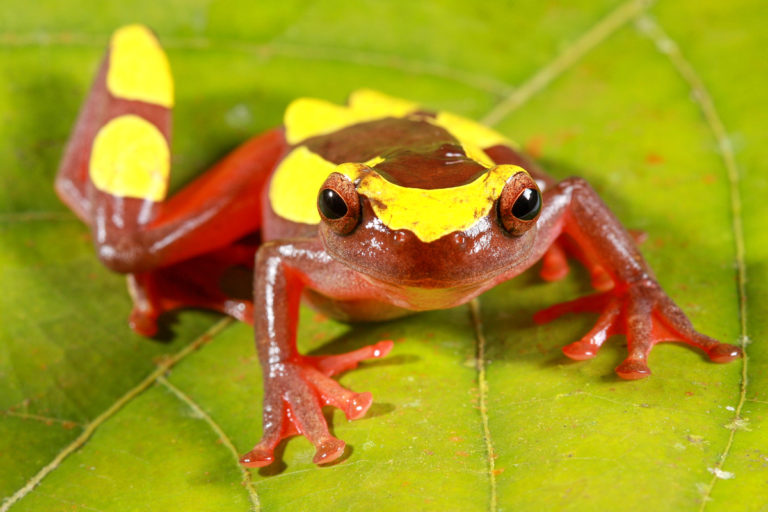
Clown frogs are widespread throughout the Amazon region. They get their name from their unique, bright coloration. Two clown frogs recently discovered in the Amazonian rainforests of Bolivia and Peru were previously considered to belong to other species, but researchers were able to show that they are their own distinct species after analyzing their DNA and the calls they make. The conservation status of both clown frogs has yet to be determined — but it is likely that they could already be considered threatened, the researchers say, given that both are reported to have particularly small distribution areas with a high risk of habitat destruction.
17. New crab with star-shaped outgrowths discovered in Taiwan

A small seamount near Peng-Chia-Yu Island, which is located 60 kilometers (about 37 miles) off the coast of Taiwan, is prized by jewelers for its red corals with red or pink skeletons. It was in these coral fishing grounds that scientists collected a new species of crab covered in tiny, star-shaped protrusions. The crab has also been discovered in the Philippines. Scientists named it Pariphiculus stellatus, from the Latin word stellatus, meaning “starry.”
18. This new primate is a ‘giant’ among tiny bush babies
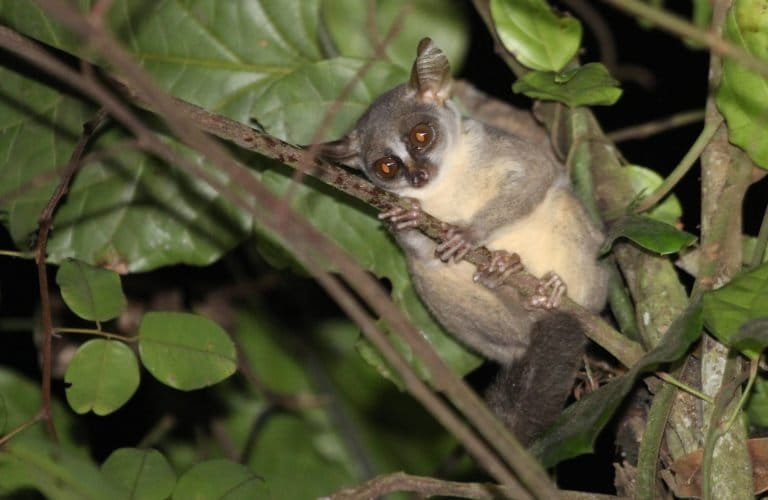
Scientists discovered a new species of primate — a greyish-brown dwarf galago, or bushbaby — in the forests of north-western Angola. The Angolan dwarf galago, named after the only country it is known to occur in, has big eyes with a distinctive white stripe between them, a long furry tail, and a slightly up-turned muzzle that merges into the dark eye-rings. Like other galagos, it is a nocturnal primate, preferring to live on tree tops. But at about 17 to 20 centimeters in length with an additional 17- to 24-centimeters-long tail, the Angolan dwarf galago (Galagoides kumbirensis) is nearly three times the size of other known dwarf galagos.
19. Newly discovered gecko loses scales in ‘really bizarre’ behavior

Geckolepis megalepis is the latest of five species to be discovered in the so-called “fish-scaled” gecko genus — a group with a unique approach to evading predators. When captured, these geckos can shed their scales, along with a layer of skin, connective tissue, and fat, in order to literally slip out of the jaws of death. The predator is left to dislodge a mouthful of scales while the denuded gecko seeks refuge, where its scales will regrow in a matter of weeks.
20. Meet the new ‘Skywalker’ gibbon
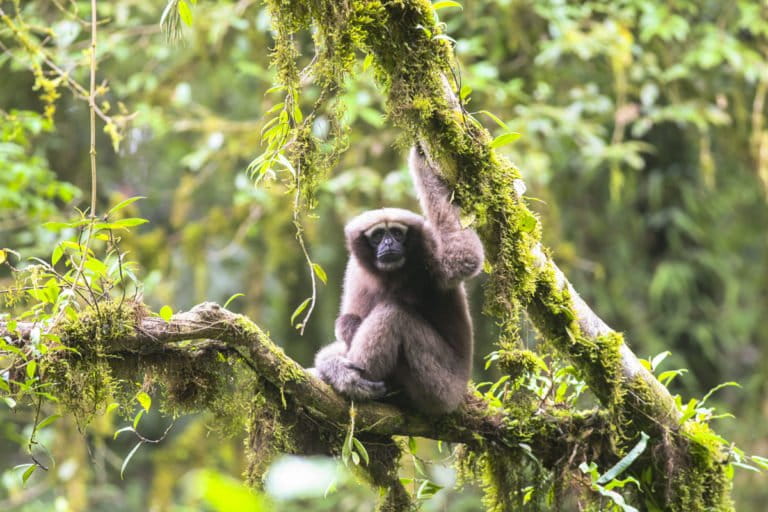
The force is with this new species of gibbon discovered in Southeast Asia. The primate was discovered in the forests of the Gaoligong Mountains, which straddle the border between southwest China and northern Myanmar. The team of researchers that made the discovery chose to name the ape the “Skywalker” hoolock gibbon (Hoolock tianxing) in order to reflect its preferred home high in the forest canopy, as well as what they describe as “the historical Chinese view of them as almost mystical beings.”

Follow Mike Gaworecki on Twitter: @mikeg2001
FEEDBACK: Use this form to send a message to the author of this post. If you want to post a public comment, you can do that at the bottom of the page.